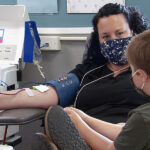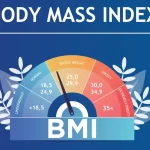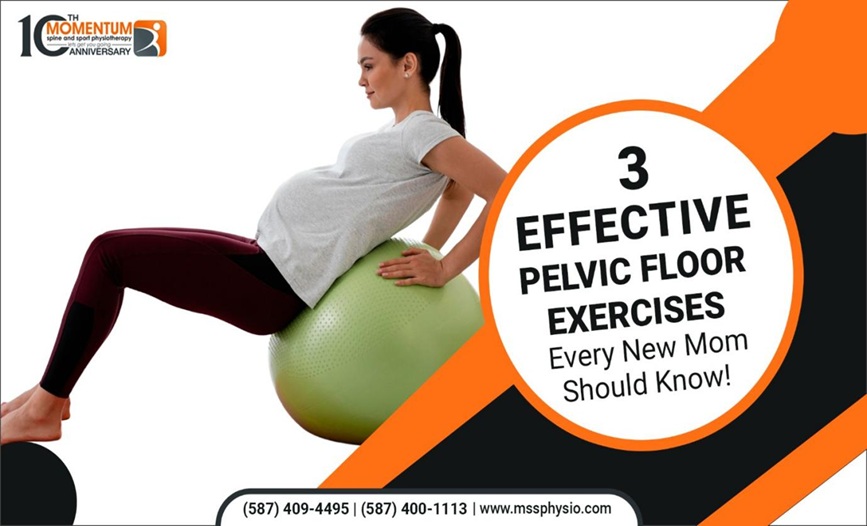Pregnancy and childbirth test the pelvic floor muscles to the limit—those quiet helpers support the bladder, uterus, and bowels. If they are weakened, new mothers can develop incontinence, organ prolapse, and pain. Therefore, strengthening them is a brilliant idea and essential for long-term health.
Pelvic Floor Physiotherapy in Edmonton offers a science-based, tailored method of reconstructing these muscles. Mothers take back control, stability, and strength with professional care and individualized exercises. A strong pelvic floor isn’t just recovery—it’s living freely, laughing without worry, and confidently loving motherhood.
Why Pelvic Floor Exercises Matter for New Moms
Once a woman gives birth, there are changes that her body experiences that result in weakened muscles, joint instability, and pain. New mothers can significantly help restore their strength and confidence through pelvic floor exercises.
Key Benefits of Pelvic Floor Exercises
- Prevents Incontinence: Pelvic muscle strengthening regulates bladder and bowel movements, minimizing leakage.
- Supports Organ Health: A healthy pelvic floor avoids prolapse, as organs move when muscles are weak.
- Reduces Postpartum Pain: Targeted exercises eliminate lower back, hip, and pelvic pain.
- Enhances Core Stability: Stronger pelvic function improves overall core strength and posture.
- Boosts Confidence and Well-being: Restoring control of the body improves mental and emotional well-being.
Including the following exercises in the daily routine can significantly improve wellness and postpartum recuperation.
1. The Power of Precision: Mastering the Kegel Routine
Kegels are the building blocks of pelvic floor strengthening, providing different techniques to maximize muscle control and recovery. Beginning with the basic Kegel, the muscles of the pelvic floor contract and release for several seconds, then build up to better support. Elevator Kegels work the muscles through controlled steps, enhancing precision and coordination. Quick Flicks add rapid contractions, improving endurance and stopping leakage. Moving further, Bridge Kegels integrate pelvic squeezes with bridge position, engaging the core for added stability. Doing these variations daily tightens the pelvic floor and alleviates the potential for incontinence and prolapse, instilling confidence—particularly post-baby.
How to Perform Kegels Correctly
- To locate the pelvic floor muscles, attempt to halt the urine stream (not for exercises, only for identification).
- Once these muscles are identified, they should be tensed, held for three to five seconds, and then relaxed for the same duration.
- Do 10-15 repetitions, progressively increasing the length of contractions and the number of repetitions with time.
- Add variations like swift flicks (rapid contractions), elevator Kegels (slowing down the pace and increasing intensity), and resistance Kegels (with a small ball or a device for increased resistance).
- Sustain consistent, regulated breathing during the exercise and make sure only the pelvic muscles contract without tension in the thighs, glutes, or abdomen.
Regular practice of Kegels promotes bladder control, facilitates core stability, and maintains pelvic health over the long term.
2. Breathe Easy: Diaphragmatic Breathing for Pelvic Relaxation
Diaphragmatic breathing supports postpartum healing through relaxation, muscle coordination, and pelvic floor restoration. The deep, conscious practice strengthens core stability, circulation, and stress reduction. New mothers restore strength and enhance overall health by engaging the diaphragm and synchronizing breath with pelvic floor movement. Frequent practice diminishes pain, accelerates recovery, and aids a smoother post-childbirth transition, making it a critical component of postpartum rehabilitation.
Step-by-step Guide to Diaphragmatic Breathing
- Lie on the back with bent knees and one hand on the stomach.
- Breathe deeply through the nose, letting the belly rise while the chest remains stationary.
- Slowly exhale through the mouth, lightly contracting the pelvic floor and core.
- Repeat for 5-10 minutes daily to induce relaxation and muscle coordination.
3. Bridge to Strength: Elevate Pelvic Stability
Bridges are an essential postpartum exercise that engages the pelvic floor, glutes, and lower back. They also engage the core, stabilize the pelvis, and enhance balance, alleviating lower back pain and promoting good posture. Consistent practice increases endurance and flexibility for long-term musculoskeletal health. Single-leg or resistance band bridges add variety and increase core engagement and pelvic stability, making this straightforward yet effective movement crucial for postpartum strength and confidence.
How to Perform Bridges
- Reclined on the back with knees bent and feet entirely on the floor.
- While lifting the hips, engage the pelvic floor muscles and hold a straight line from the shoulders to the knees.
- Stay here for 3-5 seconds, then return to the starting position.
- Repeat 10-15 times, working up endurance and control over time.
Taking the First Step Toward Recovery
Postpartum recovery requires pelvic floor exercises for new mothers to recover strength, stability, and confidence. A daily routine involving these exercises can prevent common issues in postpartum recovery and ensure long-term well-being.
Getting professional assistance through pelvic floor physiotherapy in Edmonton ensures professional care designed to suit individual recovery requirements. Momentum Spine and Sports Physiotherapy Clinicoffers tailored treatment to enable new mothers to regain strength and confidence during pregnancy. Take the first step in postpartum recovery—begin physiotherapy exercises today!











